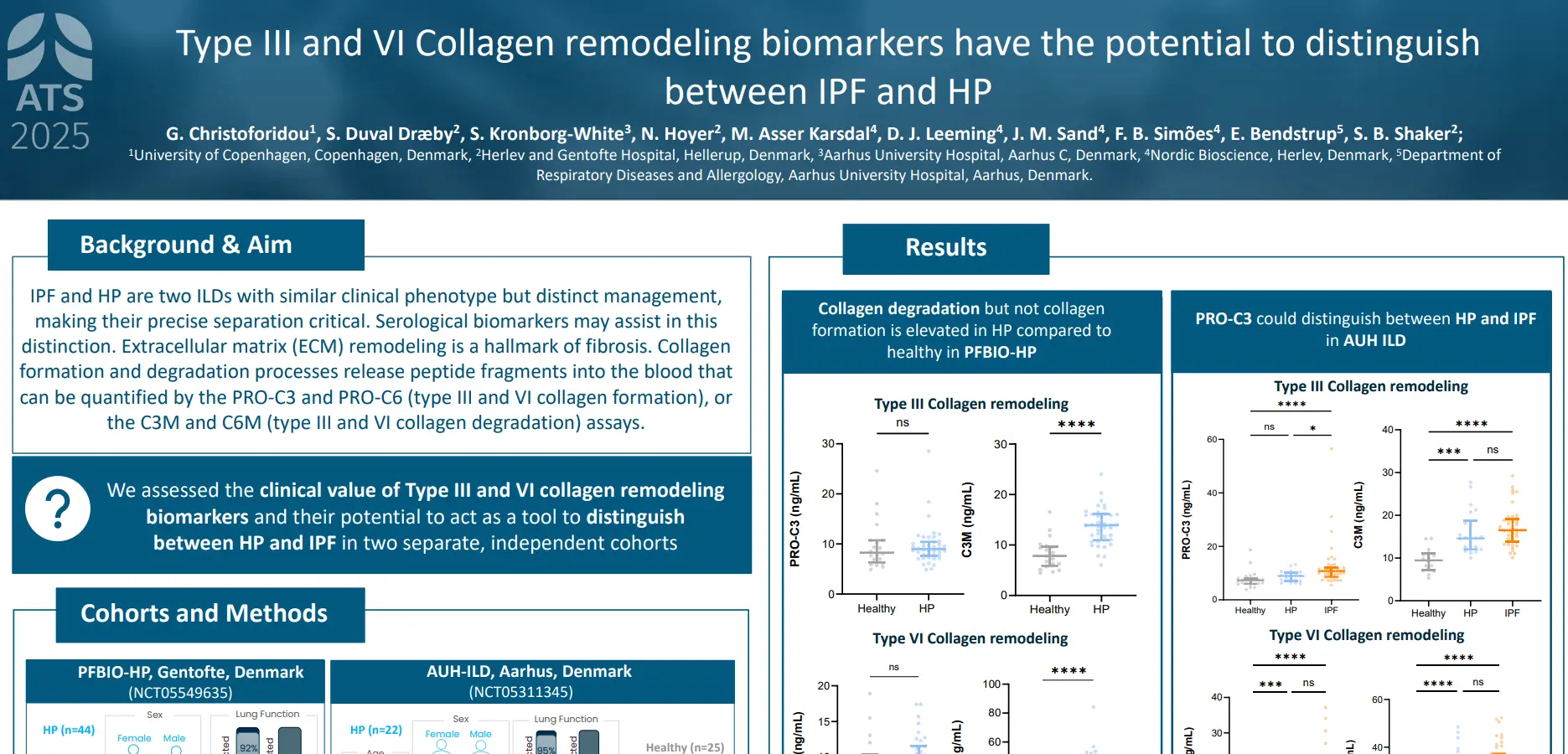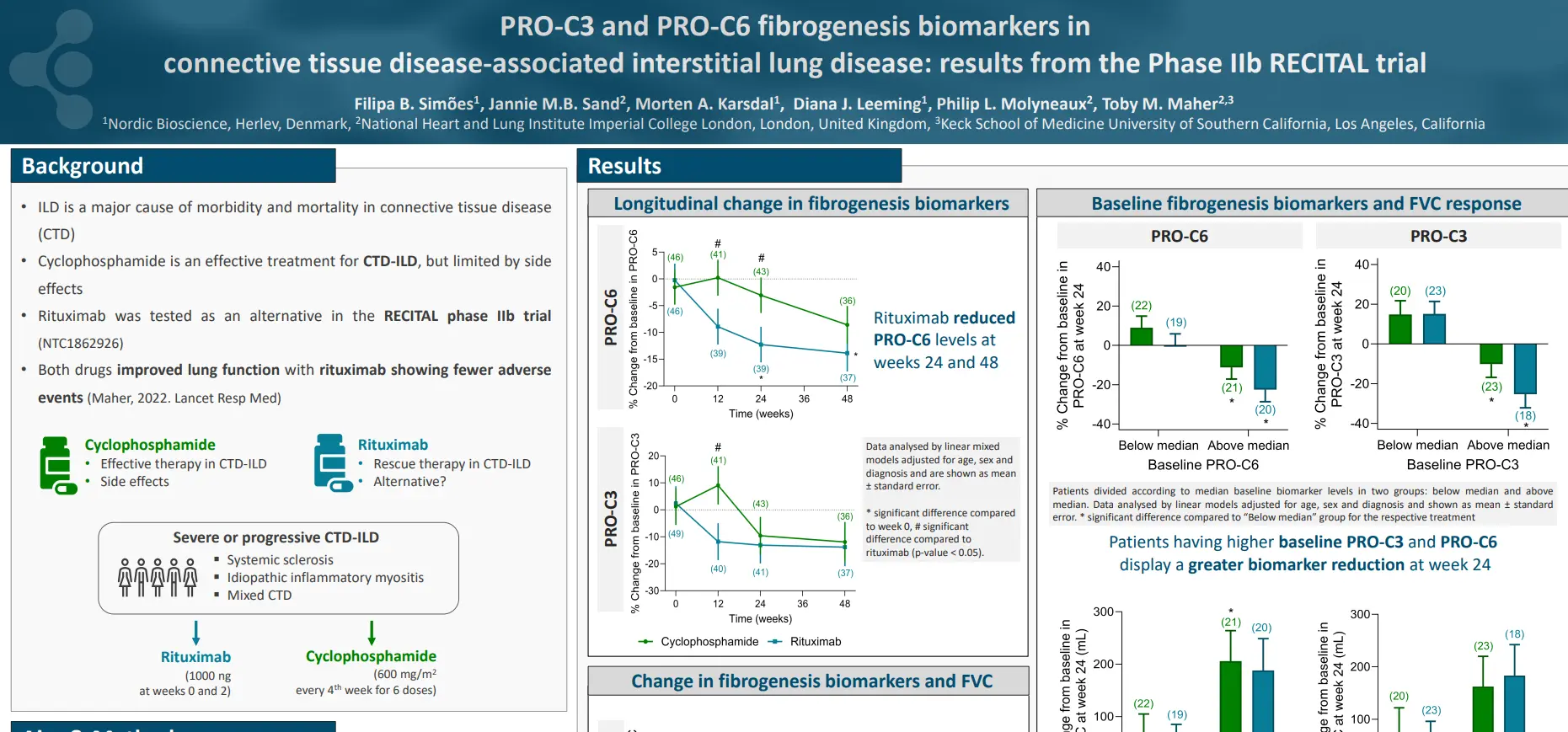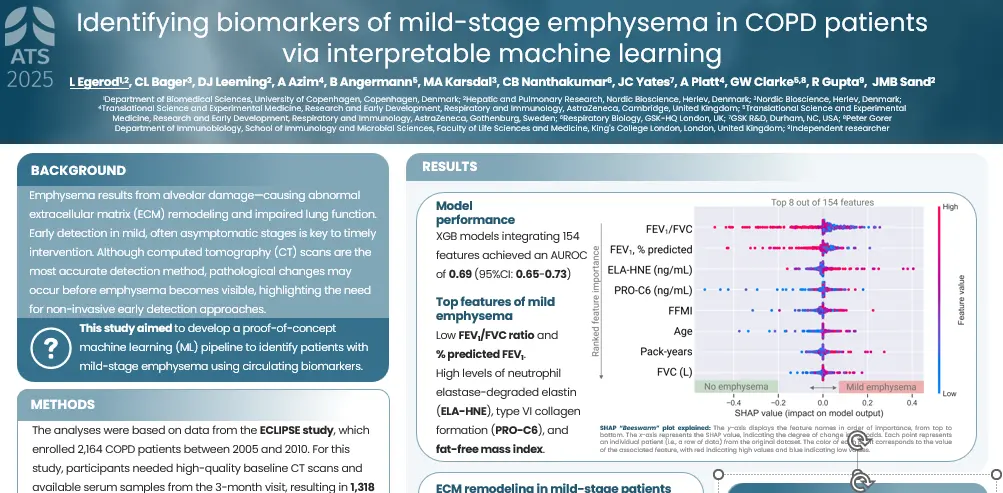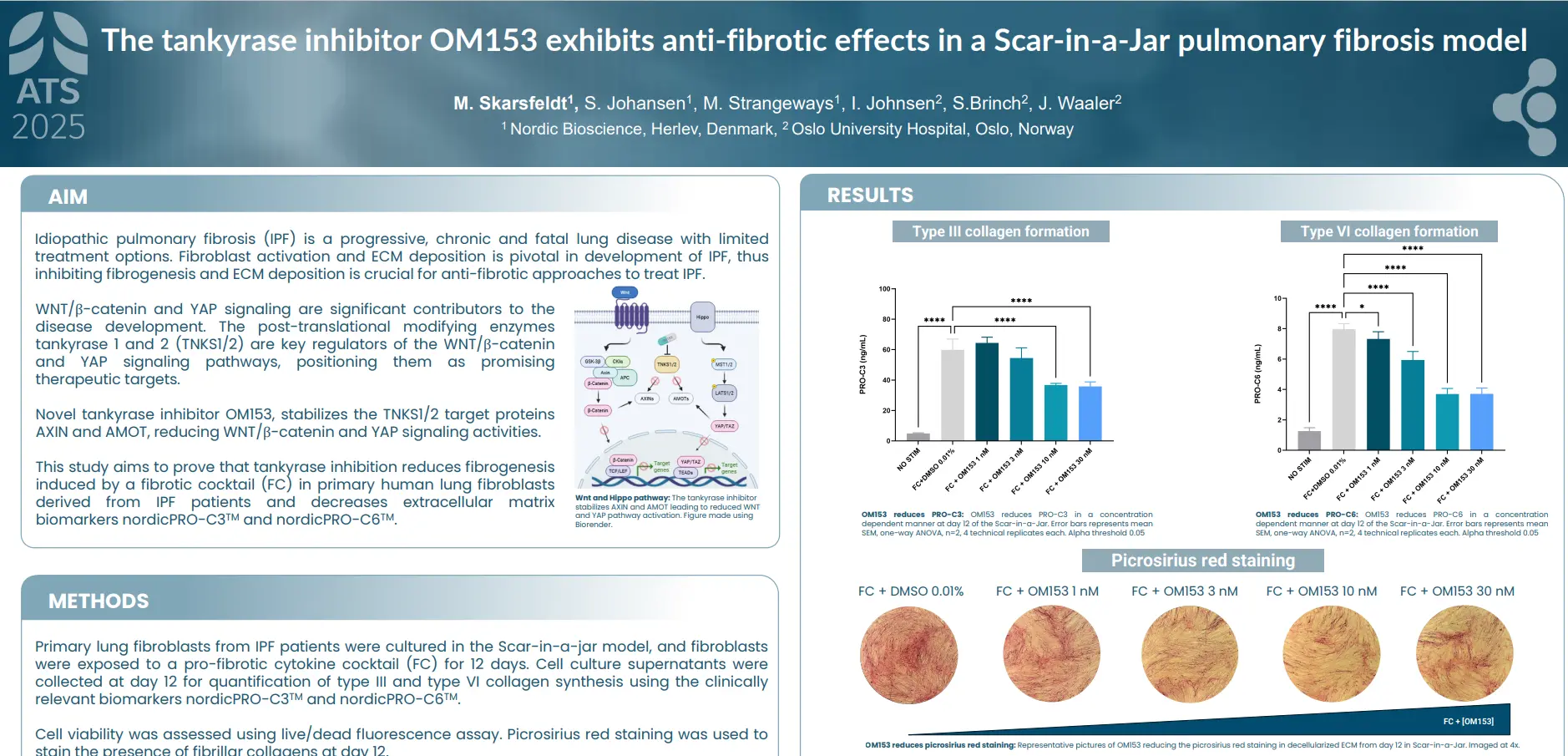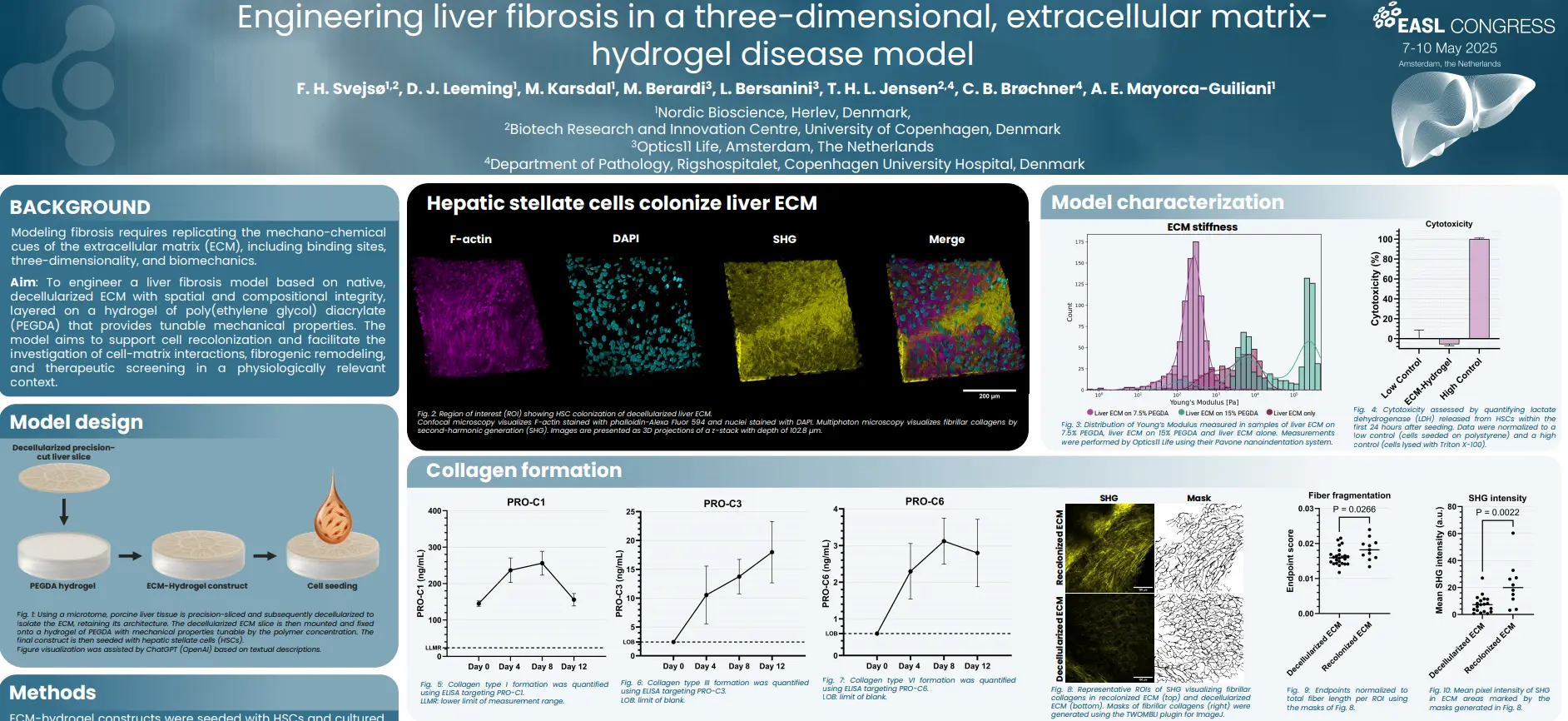PRO-C3 and PRO-C6 fibrogenesis biomarkers in connective tissue disease-associated interstitial lung disease: results from the Phase IIb RECITAL trial
Introduction
ILD is a major cause of morbidity and mortality in connective tissue disease (CTD). Cyclophosphamide is an effective treatment for CTD-ILD, but is limited by side effects. Rituximab was tested as an alternative in the RECITAL phase IIb trial. The result was that both drugs improved lung function, but rituximab showed fewer adverse events.
The aim of this study was to evaluate the effect of cyclophosphamide and rituximab on fibrogenesis in CTD-ILD.
Poster
Conclusion
The decrease in nordicPRO-C6™ and nordicPRO-C3™ suggest that, besides their immunomodulatory effects, these drugs may also reduce fibrogenesis. Furthermore, nordicPRO-C3™ and nordicPRO-C6™, measured at baseline and as % change from baseline, are associated with FVC response. These findings highlight nordicPRO-C3™ and nordicPRO-C6™ as promising biomarkers for progressive CTD-ILD.


